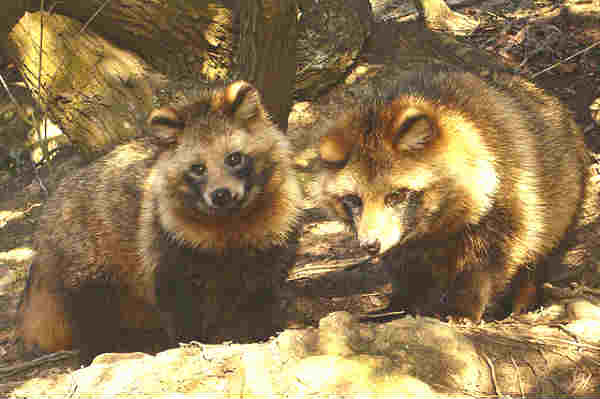A Raccoon-fox Hybrid?
Hybrids out of History
EUGENE M. MCCARTHY, PHD GENETICS, ΦΒΚ
|
A diligent scholar is like a bee who takes honey from many different flowers and stores it in his hive.
—John Amos Comenius
|
 Rafinesque
Rafinesque(1783-1840)
Procyon lotor
In an article on hybrids, the early American naturalist Constantine Samuel Rafinesque (1821, p. 113; see also Rafinesque 1820, p. 86) says, “The aboriginal hunters of North America believe that the raccoon (Procyon lotor to naturalists) can breed with the red fox…I have seen a complete skin of the product of this cross. It resembles
The possible existence of such a hybrid is made somewhat more plausible by the known existence of an extant raccoon-canid intermediate, the raccoon dog (Nyctereutes procyonoides). Raccoon dogs look like raccoons, but are classified in the same family as dogs, Canidae.
Raccoon dogs (see picture below) are native to the Far East and have become established also in Europe, where they are introduced. But their natural occurrence in the New World is unknown. So Rafinesque’s specimen cannot be explained away simply as an example of Nyctereutes, even though raccoon-dogs, just from their appearance, seem like plausible candidates for raccoon-fox hybrids.
Bartoszewicz (2011), an expert on raccoon dogs, says the raccoon (P. lotor) “looks very much like
Another animal, which, from its description, may have been a raccoon-fox hybrid, was shot in Cloverdale, Indiana, in 1931, as reported on the front page, column 4, of the November 14 issue of The Daily Banner, a newspaper published in the nearby city of Greencastle.
The red fox and the raccoon have similar chromosome counts (2n=34 and 2n=38, respectively).
Most hybrids reported by Rafinesque were rather mundane, but he did describe one other rather unusual cross.
The video below shows a male raccoon mating with a fox:
No, these aren’t raccoon-fox hybrids. They’re raccoon dogs (Nyctereutes procyonoides):
 Image: Wikimedia.
Image: Wikimedia.